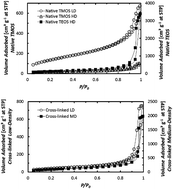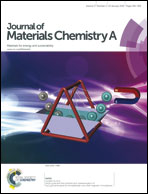Shortened aerogel fabrication times using an ethanol–water azeotrope as a gelation and drying solvent†
Abstract
Native and cross-linked aerogel monoliths were fabricated in a few hours using a technique that does not require solvent exchange prior to supercritical drying. Native oxide alcogels were synthesized by alkoxide hydrolysis–condensation using an ethanol–water azeotrope mixture as the gelation solvent. Cross-linked alcogels were synthesized by replacing part of the gelation solvent with a monomer, followed by visible light photopolymerization for which Eosin Y was used as an initiator and a tertiary amine used as a coinitiator. After aging for 2 hours, the alcogels were removed from the molds, placed in a pressure vessel, and dried using a supercritical ethanol–water azeotrope mixture. Starting from the sol, dried aerogels could be fabricated in about 6 hours. Most importantly, since solvent exchange was not required, native oxide and polymer cross-linked aerogels could be fabricated at the same rate. A systematic study was carried out to confirm that monoliths produced with our technique had density, surface area and Young’s modulus comparable to those of aerogels produced following more conventional pathways, such as supercritical CO2 drying. We synthesized samples using base- and acid-catalyzed chemistries, varied alkoxide concentration and, for cross-linked aerogels, monomer concentration. Depending on alkoxide concentration, native oxide aerogels had densities between about 0.06 and 0.17 g cm−3 and surface areas between about 300 and 500 m2 g−1. Depending on monomer type and concentration, cross-linked monoliths had a modulus between about 10 and 400 MPa, a density between 0.25 and 0.5 g cm−3 and a surface area between 150 m2 g−1 and 350 m2 g−1. Shrinkage was about 5% for base-catalyzed synthesis, about 20% for acid-catalyzed synthesis and about 10% for cross-linked monoliths. Infrared and Raman spectroscopies, solid state NMR and thermogravimetric analysis confirmed that drying in a supercritical ethanol–water azeotrope did not significantly affect the cross-linking polymer used to produce mechanically strong aerogels.


 Please wait while we load your content...
Please wait while we load your content...